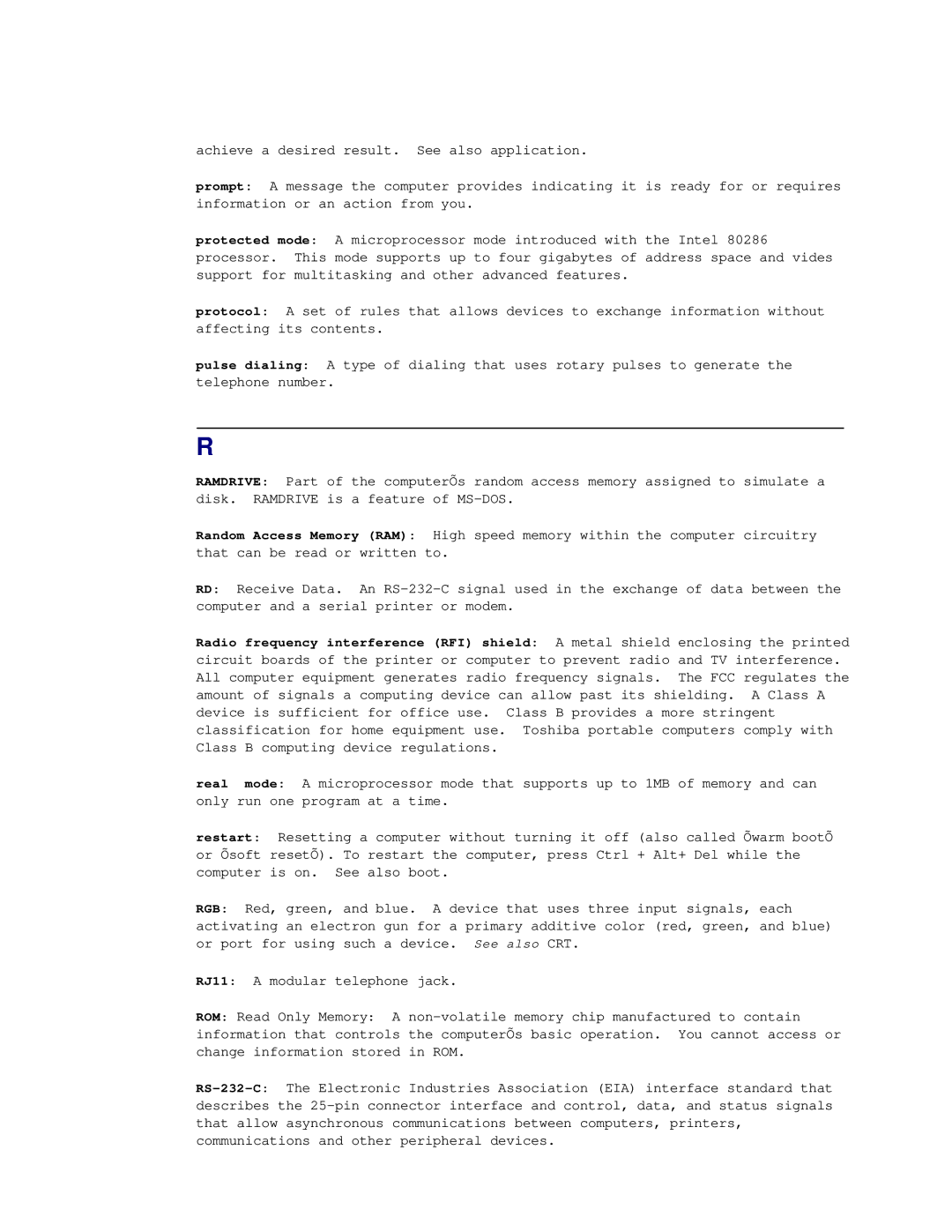achieve a desired result. See also application.
prompt: A message the computer provides indicating it is ready for or requires information or an action from you.
protected mode: A microprocessor mode introduced with the Intel 80286 processor. This mode supports up to four gigabytes of address space and vides support for multitasking and other advanced features.
protocol: A set of rules that allows devices to exchange information without affecting its contents.
pulse dialing: A type of dialing that uses rotary pulses to generate the telephone number.
R
RAMDRIVE: Part of the computerÕs random access memory assigned to simulate a disk. RAMDRIVE is a feature of
Random Access Memory (RAM): High speed memory within the computer circuitry that can be read or written to.
RD: Receive Data. An
Radio frequency interference (RFI) shield: A metal shield enclosing the printed circuit boards of the printer or computer to prevent radio and TV interference. All computer equipment generates radio frequency signals. The FCC regulates the amount of signals a computing device can allow past its shielding. A Class A device is sufficient for office use. Class B provides a more stringent classification for home equipment use. Toshiba portable computers comply with Class B computing device regulations.
real mode: A microprocessor mode that supports up to 1MB of memory and can only run one program at a time.
restart: Resetting a computer without turning it off (also called Õwarm bootÕ or Õsoft resetÕ). To restart the computer, press Ctrl + Alt+ Del while the computer is on. See also boot.
RGB: Red, green, and blue. A device that uses three input signals, each activating an electron gun for a primary additive color (red, green, and blue) or port for using such a device. See also CRT.
RJ11: A modular telephone jack.
ROM: Read Only Memory: A
